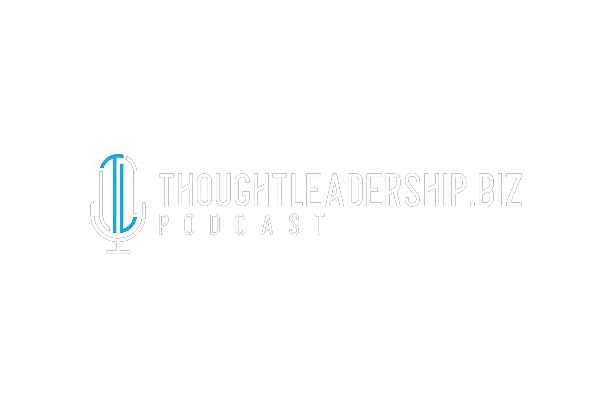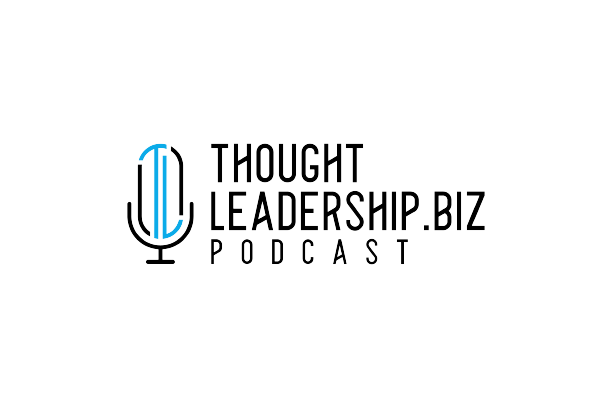
Read / Watch / Listen
Stream this article from your favorite podcast audio or video streaming service as referenced below.
Read: Below
Watch: https://youtu.be/69mak2mySho
Listen: https://anchor.fm/thoughtleadershipbiz
More ways to read, watch and listen:
Read the Article
Hi everyone, and welcome to another enlightening episode of ThoughtLeadership.biz. I’m Chris Machut.
In the last podcast we talked about how it’s tough and often lonely at the top.
This week, I’m going to be talking about one of the most dangerous by-products of the tough-at-the top lifestyle: leadership burnout.
Why? Because, as one of my viewers pointed out, everyone talks about employees getting burned out, nobody talks about leaders getting burned out.
So let’s do it – and also look a 5 great ways to avoid it, too.
*****
But before I do that, I need to remind you, as always, to check out my latest articles, podcasts and more at ThoughtLeadership.biz. Don’t forget that you can also catch me in person on YouTube or listen via Spotify and Anchor.fm. Oh, and I’m on Apple and Google Podcasts, too. You could always get yourself over to Twitter and LinkedIn if you prefer, where you can make sure you don’t get left behind (this is a LEADERship blog, after all. . .) by subscribing for notifications.
*****
Alrighty then. Leadership burnout – one of the biggest professional bummers out there.
So, why does it happen, exactly?
Well, the answer is, as you would expect, pretty complicated, but the definition is quite simple:
Leadership burnout is a state of long-term mental and physical stress and fatigue usually caused by investing large amounts of energy into a job without seeing the desired results.
It’s possible to also burn out while creating the desired results, of course, but, either way, burnout is bad. So, bad in fact that the WHO has classified it as a disease.
And the disease is on the rise. . .
Given the fact that we live in such a fast-paced world where competition is often cut-throat and achievement is everything, it’s no surprise that our well-being suffers.
Leaders, in particular, are expected to be perpetually high-performing individuals. As a result, they experience unrelenting pressure to challenge, nurture and inspire their teams while driving performance, creating high-quality outcomes and moving metrics in all the right directions.
But this level of apparent peak performance often comes at a huge cost, both financially and in terms of health.
Leadership burnout can cost billions and also burn a hole in the efficiency, profits, and reputation of a company or organization.
But it doesn’t have to be that way.
By recognising the tell-tale signs and understanding a few key principles, it’s possible to not only sit comfortably at the top of the leadership tree, but do so without worrying about burnout and finding yourselves lying in a pile of entrepreneurial ashes further down the line.
*****
Okay, so here are five sensible strategies for stopping leadership burnout:
1. What happens in the office stays in the office.
Unless you’ve recently sold your house, been evicted or been kicked out of it by your other half (which is kinda the same thing I suppose. . .), don’t live in the office. And I’m not just talking about physically. So many people physically leave the office but remain there in their mind for hours, if not days afterwards. And that’s never healthy.
It’s crucial to understand that ‘staying in the office’ (in whatever form it takes) doesn’t always equal productivity. It’s usually the opposite. And it shouldn’t be a medal of honor either.
Taking time off work is just as important as work itself, as the brain needs time to relax and energize itself by doing things that don’t require so much thinking, planning and pressure.
So, make sure you unplug regularly and give yourself a break – before you reach breaking point.
2. The Pitfalls of perfectionism.
Nothing is perfect. Period.
I remember hearing a Buddhist monk explain it like this:
What is more beautiful, a perfectly ordered set of a thousand trees planted in perfect rows or a forest of a thousand trees growing where they will?
Most of us would agree that the forest is more beautiful, right? I would, anyway.
Now, I’m obviously not saying that you should let everything go and allow your organization run itself and grow organically. That would just be, well. . . dumb.
What I am saying is perfectionism is impossible, so there’s no point in even trying; all that will happen is you’ll burn yourself out.
The pursuit of perfectionism is one of the leading causes of chronic stress and subsequent burnout.
So, my advice is, learn to accept that ‘good enough is good to go’ and move on. Life really is too short.
3. Know your limits
I’m sorry to break this to you but despite what you might think or what people may have told you, you’re not a superhero. So don’t try and be one. There’s no need to try and live up to other peoples’ expectations, as you rarely will.
Now, there’s nothing wrong with working hard, being committed and going the extra mile. But if you’re not careful, before you know it you’ll be heading towards the point of no return.
So, to avoid this unwanted excursion into the badlands of burnout territory, you need to learn the gentle but effective art of saying no.
That’s the bottom line.
Know your limits. And just say no when you know you need to.
4. Have a hobby
If you have a hobby, great. If you don’t then get one!
There’s no better way to change lanes than get stuck into your favorite hobby, whether it’s rock climbing, music, sports or relaxing with a good book.
Whatever it is, it’s an antidote to burnout and should be encouraged because at the end of the day, life is there to be enjoyed.
The latest research also shows very clearly the link between enjoying your favorite hobby and an increase in mental well-being. Even such simple things as going on vacation can make a measurable difference to your physical and mental health.
The most successful long-term leaders in the world all know this secret. They all make time to have fun.
And so should you.
5. Delegate with discretion
Many leaders are control-freaks; it often comes with the territory.
But that’s nothing to be proud of.
Like perfectionists, control-freaks are obsessed with everything being done the ‘right’ way – in other words, THEIR way.
And what happens if that doesn’t happen? Yep – they freak out.
Instead of freaking out, they should learn to give out by delegating work to others, but that’s usually easier said than done, especially to begin with.
While it’s true that in the short-term it might be a pain to have to explain for thirty minutes how to do a job that would have taken you five, intelligent leaders think long-term and play the long game.
By delegating the right jobs to the right people at the right times, you kill three burnout birds with one strategic stone:
· You relieve yourself of the short-term stress of having to do it yourself when you are already overloaded
· You free up time that can be used do something else (or even take a quick break)
· You show trust in and also empower your employee
By delegating with discretion, you can increase productivity, improve morale, professionally develop your team and also keep yourself on the right side of the borderline between business bliss and burnout.
Your choice.
*****
So, there you have it.
Burnout isn’t inevitable. It’s not a certainty. It’s simply symptomatic of a series of bad choices that have compounded over time.
So, if you’re beginning to see the warning signs and smell the burning embers at the bottom of your leadership tree, don’t ignore it.
Action these five tips today and learn to avoid leadership burnout before it even begins. By doing so you’ll ensure that you and your organization are ‘on fire’ in the right way. . .
*****
This is Chris Machut.
See you next time – and stay safe out there!
Latest posts by ThoughtLeadership (see all)
- Episode 24 – The Crypto Cake CEX vs DEX - January 27, 2023
- Episode 23 – Blockchain Basics - December 16, 2022
- Episode 22 – Be Alpha - November 18, 2022










